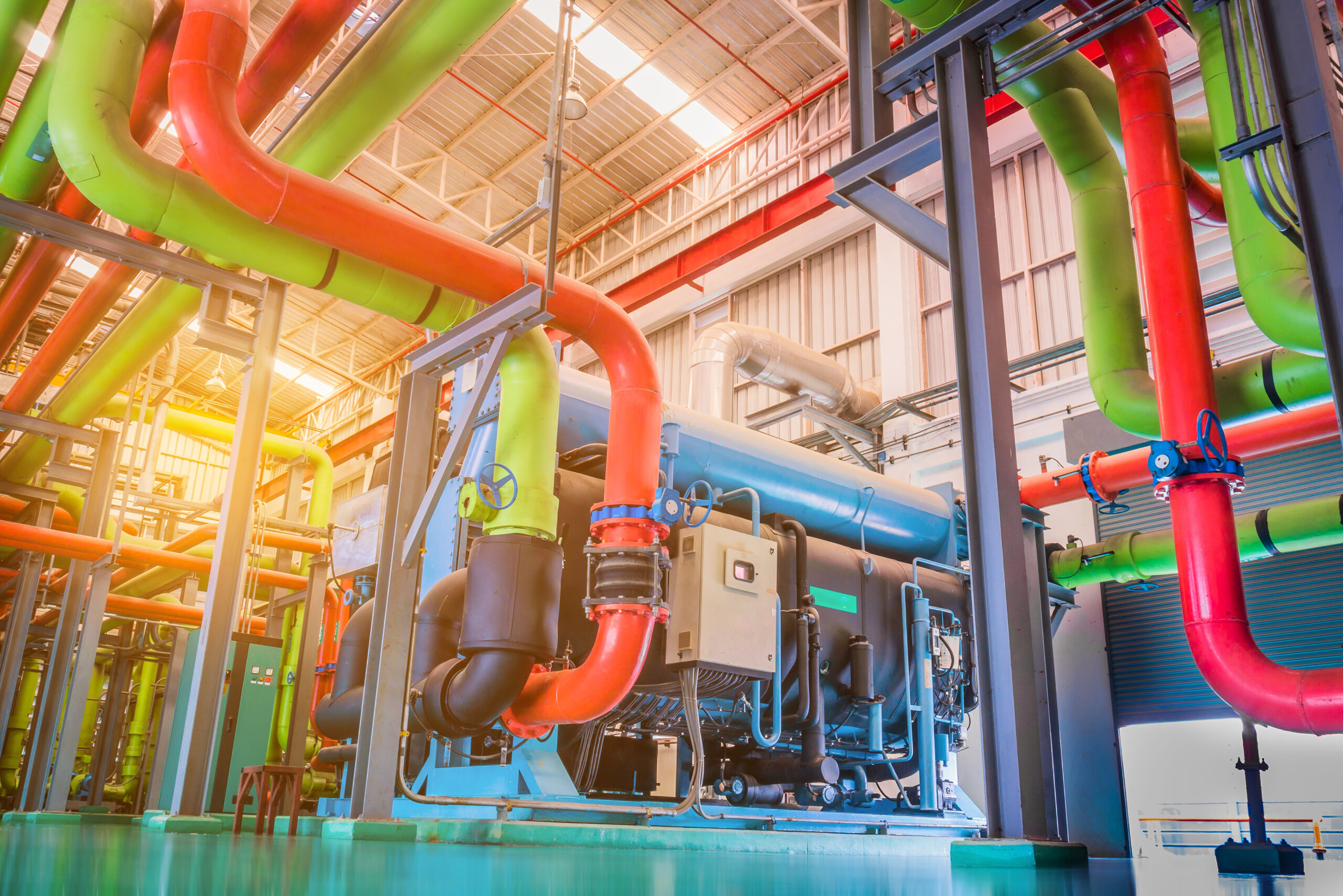PFAS Restriction Proposal – some initial observations
EFCTC published a press release about the proposal for a universal PFAS restriction, which will likely impact certain F-gases. Extensive documentation has been provided provided by the dossier submitters (Denmark, Germany, Norway, Sweden, and the Netherlands) for this restriction proposal, but their conclusions for the use of HFCs and HFOs will likely raise many questions. One obvious example for large centrifugal chillers, which may have a 1000 kg charge of an HFC, HFO or HCFO, illustrates some of the issues. More generally, EFCTC notes that F-gases are a class of substances that are already successfully regulated under the F-gas Regulation (EU Reg No 517/2014), which is being tightened under the ongoing revision.
Annex E: Impact Assessment of the Restriction Proposal comments that:  "These chillers are used in a wide range of applications from schools and commercial buildings to pharmaceuticals and mining to data centre cooling. Chillers tend to operate for many years and have been reported to last worldwide ‘not uncommonly for over 40 years’ " (page 257). The RTOC 2018 Assessment Report (RTOC 2018 AR, available here) states that: "By contrast centrifugal water cooled chillers typically last 30 years, and not uncommonly even 40 years, with routine maintenance. The point is that whatever refrigerant is used in any generation of chillers, it is likely to remain in service for a long time. Modern chillers can have extremely low leakage rates". RTOC 2018 AR notes that: "the direct global warming effects from refrigerant emissions are much smaller since direct emissions have been significantly reduced in recent years through lower charge systems, low-leak designs, manufacturing and testing improvements, and improved service practices". The F-gas Regulation requires installed leak detection systems for large chillers with HFCs. At end-of-life it is straightforward to recover the refrigerant with rapid recovery services being available for large system charges, and methods to recycle or destroy the HFCs/HFOs/HCFOs are well established. RTOC 2018 AR also explains that "Centrifugal and axial-turbo compressors by nature must be designed specifically for a particular refrigerant and a particular set of operating conditions for the refrigerant cycle in which they are used. Direct refrigerant substitution in these chillers can be made only in cases where the properties of the substitute refrigerant are nearly the same as those of the refrigerant for which the equipment was designed, or when the impeller speed and/or impeller geometry can be changed easily".
"These chillers are used in a wide range of applications from schools and commercial buildings to pharmaceuticals and mining to data centre cooling. Chillers tend to operate for many years and have been reported to last worldwide ‘not uncommonly for over 40 years’ " (page 257). The RTOC 2018 Assessment Report (RTOC 2018 AR, available here) states that: "By contrast centrifugal water cooled chillers typically last 30 years, and not uncommonly even 40 years, with routine maintenance. The point is that whatever refrigerant is used in any generation of chillers, it is likely to remain in service for a long time. Modern chillers can have extremely low leakage rates". RTOC 2018 AR notes that: "the direct global warming effects from refrigerant emissions are much smaller since direct emissions have been significantly reduced in recent years through lower charge systems, low-leak designs, manufacturing and testing improvements, and improved service practices". The F-gas Regulation requires installed leak detection systems for large chillers with HFCs. At end-of-life it is straightforward to recover the refrigerant with rapid recovery services being available for large system charges, and methods to recycle or destroy the HFCs/HFOs/HCFOs are well established. RTOC 2018 AR also explains that "Centrifugal and axial-turbo compressors by nature must be designed specifically for a particular refrigerant and a particular set of operating conditions for the refrigerant cycle in which they are used. Direct refrigerant substitution in these chillers can be made only in cases where the properties of the substitute refrigerant are nearly the same as those of the refrigerant for which the equipment was designed, or when the impeller speed and/or impeller geometry can be changed easily".
HFC-134a, HFO-1234ze(E) and HCFO-1233zd(E) are common refrigerants used in large centrifugal chillers. Their safety properties, such as low toxicity and low or non-flammability, make them particularly suitable for large system charges.
It is somewhat surprising that proposed derogations (i) and (j) do not recognise the widespread use of centrifugal chillers in various settings due to:
- The benefit from using low toxicity, low or non-flammability HFC/HFO/HCFO refrigerants.
- Their low leakage rates.
- The ease of end-of-life recovery of refrigerant.
- The large capital cost of centrifugal chillers.
- Their expected lifetime.
- The difficulties of converting them, if at all possible, due to the requirement to have nearly the same technical properties and meet applicable safety requirements for the location.
Derogations
Annex XV of the proposed Restriction lists, amongst others, the following derogations (page 5):
- maintenance and refilling of existing HVACR equipment put on the market before [18 months after EiF] and for which no drop-in alternative exist until 13.5 years after EiF;
- refrigerants in HVACR-equipment in buildings where national safety standards and building codes prohibit the use of alternatives;